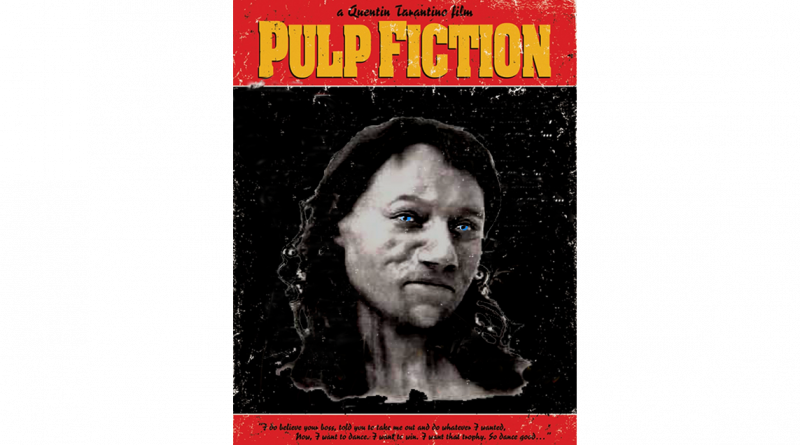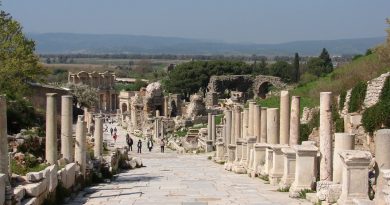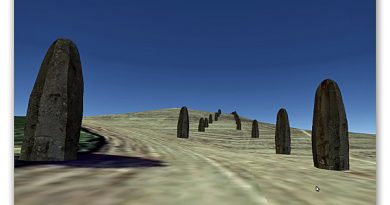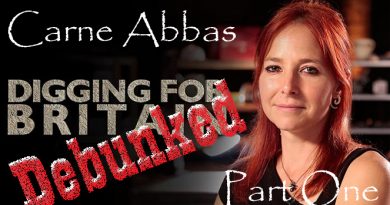Archaeological pulp fiction – has archaeology turned from science?
After 40 years of studying archaeological features and reports, I have sadly concluded that archaeologists no longer follow accepted scientific methods and now revert to the simplistic traditional model or political correctness, mixed with the occasional sensationalism, not to progress the discipline but moreover, to find funding and maintain their status in the archaeological community. This new social media marketing technique has also spread to both the geological and anthropological disciplines closely related to this archaeological pulp fiction.
Science is about questioning what is known, as it is understood from History that current knowledge is not a ‘SCIENTIFIC FACT’ but just a supposition which over time will change and become more accurate through questioning the details of these ideas over time and the inevitable future scientific discoveries – but this is not the case in archaeology.

In recent years, the discovery of the Bluestone quarry at Craig Rhos-Y-Felin should have brought a new perspective to the construction date and nature of the civilisation that built Stonehenge – Britain’s most famous prehistoric site. Instead, the findings and data were manipulated to prove an existing hypothesis while excluding more interesting and revolutionary results.
This dogmatic approach to archaeology is compounded by new theories and even findings being ignored and, in some instances, actively crushed by the archaeological establishment and their disciples in favour of this dated ‘historical narrative’ in this new post-truth era of social media – rather than following the past practices of a scientific methodology of examining the potential and feasibility of these new ideas.
This censorship is also practised in scientific journals and websites either by blanket failure to publish contrary evidence or by claiming a liberal attitude and then demanding excessive peer-reviewed endorsements before consideration. In some instances, they encourage the simplistic labelling of these ideas as ‘pseudoscience’ in social media and academic punishment at university for any student that dares suggest such ideas in their assignments. (Archaeological pulp fiction)

Moreover, these education establishments have failed to teach their students basic scientific principles of ‘critical analysis’ and ‘deductive logic’ when examining primary sources, demanding their students rely on secondary sources (opinions) of an accepted highly vetted reading list – which therefore favours the current simplistic traditional theories. Consequently, this allows them to concentrate their energies on the establishment’s main concern for ‘bums on seats’ to secure funding for future financial security, rather than the higher principle of progressive education – questioning the validity of the certificates and qualifications awarded.
The establishments over-reliance on ‘peer-review’ as a conformity standard of credibility has not only been recognised by myself within my recent Honours degree in History but by moreover Richard Horton, editor of the British medical journal The Lancet, who said that:
“The mistake, of course, is to have thought that peer review was any more than a crude means of discovering the acceptability—not the validity—of a new finding. Editors and scientists alike insist on the pivotal importance of peer review. We portray peer review to the public as a quasi-sacred process that helps to make science our most objective truth teller.
But we know that the system of peer review is biased, unjust, unaccountable, incomplete, easily fixed, often insulting, usually ignorant, occasionally foolish, and frequently wrong.” (Archaeological pulp fiction)

So, in what areas do we see this flawed blanket censorship and what are the other possibilities archaeologists have failed to comprehend?
Cheddar Man
A recent discovery in Britain was made by analysing the mtDNA (mitochondrial DNA) from the skeleton of a Mesolithic man, discovered in the Cheddar Gorge, Somerset, England. According to the announcement, what researchers found in their analysis was that this ancient person (dated approximately 9000 years ago) likely had a dark (brown-black) skin colour, dark brown hair, blue eyes, and phenotypical features resemble western Europeans. That’s all well and good, but what’s the problem with that?
Without going into too much detail about the genomic research conducted, the issue is with the findings compiled with data collected over twenty years prior when the mtDNA collection first began in 1996. The 1996 study (interestingly was not subjected to any peer-review) it has been stated by subsequent reports referencing these findings, suggested that there was modern DNA contamination at some point in the process of collection. (Archaeological pulp fiction)
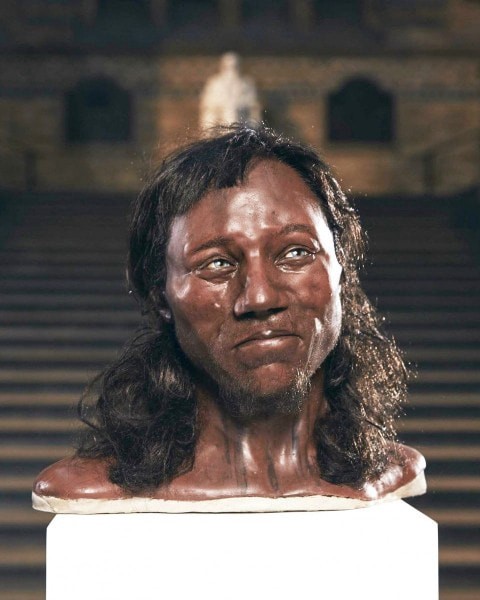
The more recent study was made after a fragment of the skull was analysed in 2018. It was found that Cheddar Man’s remains belonged to the same ancestral family as other Mesolithic European populations. This information does not seem too profound, but what appears to be an issue for some, including myself, is simply the lack of efforts to peer-review the work first conducted to ensure that all the findings are legitimate and then knowing its questionable origins to go on to publish the chromosome details of hair colour, eye colour and skin colour via a model to gain maximum publicity.
Even if the DNA was not contaminated initially, the chromosomes required to estimate (as this science is still not proven, just a working hypothesis) were missing. Of the six types of chromosome needed for the estimation of skin tone, 60% of them were absent, and consequently, at BEST, the assessment had a 60% chance of being incorrect. Science dictates that unless the probability rate is greater than 50%, then the result should not be even attempted as the likelihood (statistically) is wrong!!
Yet, this announcement has now created ‘scientifically based’ documentaries showing that black Rastafarian men (with dreadlocks), discovered and populated Ireland ten thousand years ago, all based on ‘Bad Science’ that gave the establishment political ‘brownie points’ on social media. Previous studies (Genomic structure in Europeans dating back at least 36,200 years, Science DOI: 10.1126/science.aaa0114) have shown that the first Europeans were Scandinavians, and hence cheddar man’s’ blue eyes’.
Craig Rhos-Y-Felin (Stonehenge’s Bluestone Quarry)
The Craig Rhos-y-Felin report (by Mike Parker-Pearson) is full of inconsistencies and logical inaccuracies as the layout of the site were never taken into consideration. Firstly is the river that runs next to the quarry – this shows that this river was still at the edge of the site as long ago as 5620 – 5460 BCE and possibly up to 1030 – 910 BCE. (Archaeological pulp fiction)
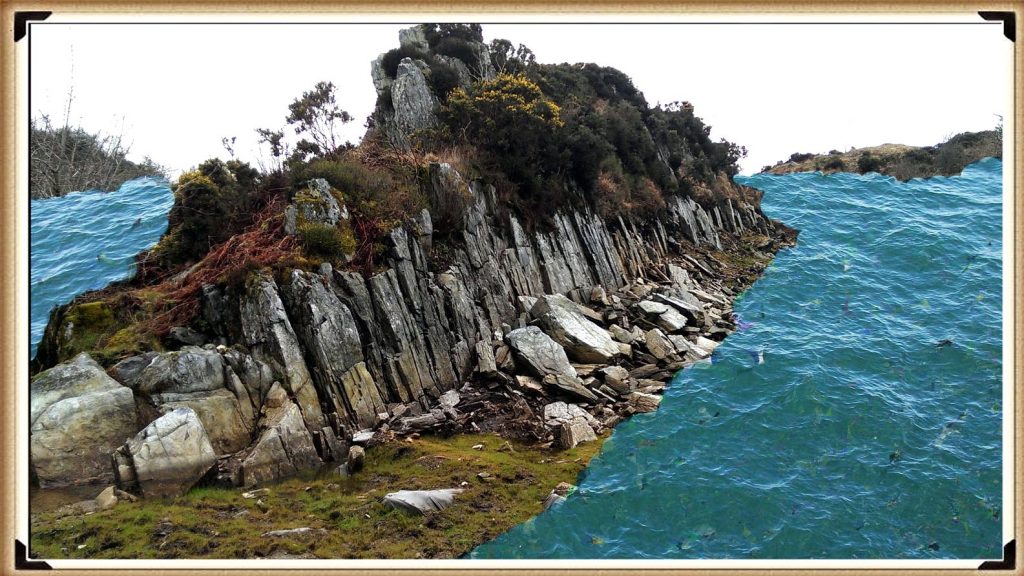
“Most of the site was then covered by a layer of yellow colluvium (035), dated by oak charcoal to 1030–910 cal BC (combine SUERC-46199; 2799±30 BP and SUERC-46203; 2841±28 BP). This deposit is contemporary with the uppermost fill of a palaeochannel of the Brynberian stream that flowed past the northern tip of the outcrop. Charcoal of Corylus and Tilia from the basal fill of this palaeochannel dates to 5800–5640 cal BC (OxA- 32021; 6833±40 BP) and 5620–5460 cal BC (OxA-32022; 6543±37 BP), both at 95.4% probability.”
Consequently, what the report is trying to tell us, is that an enlarged stream that feeds into the River Nevern was flowing during the Mesolithic Period up to the quarry outcrop rocks, and it remained there just a few metres away, even up to 1000 BCE. Therefore, the apparent transport system for these large newly quarried stones to their final destination at Stonehenge, as we have seen in other countries with their stone constructions like Egypt – was via a boat.
Moreover, the site layout also gives a clear indication of when the stone was genuinely quarried. There is a single monolith ready for transportation by the river on the east side of the site, and the hearths, which are human-made, are a few metres south of this monolith – where you would expect them. The problem for archaeologists is that these are Mesolithic hearths, and they’re not just one but three hearths dating from 8550 – 8330 BCE; 8220 – 7790 and BCE 7490 – 7190B CE and yet the report quite clearly states:
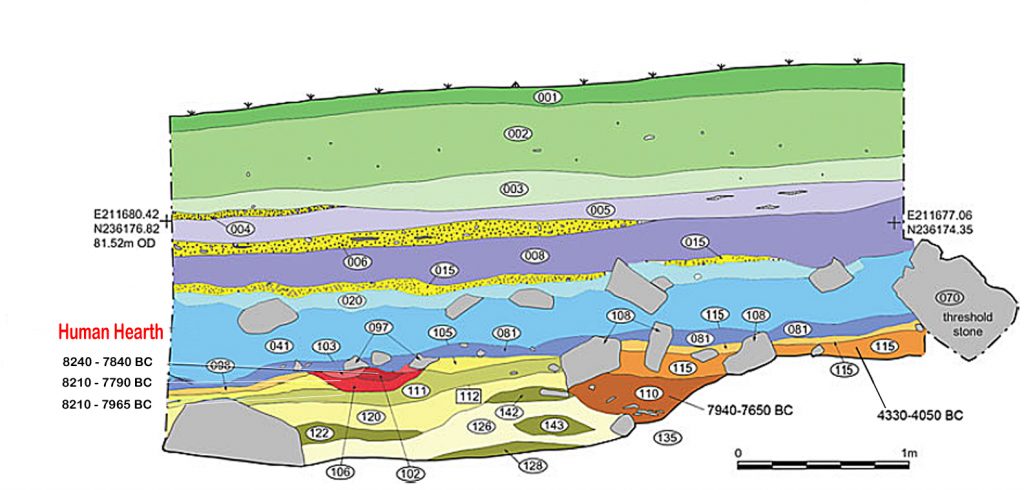
“There is no evidence of any Mesolithic Quarrying or working of Rhyolite from this crop”.
This is an astonishing unscientific claim – for how they would know what tool marks are either Mesolithic or Neolithic (would they not be using the same tools?) And secondly, what do they think they were doing there at the quarry during these 1300 years?
What the establishment would like you to believe is that just TWO of the 42 carbon dates obtained from the site are of importance and the other 40 are irrelevant. This is ‘bad science’ in pursuit of maintaining the ‘tradition model’ at the expense of real science. (Archaeological pulp fiction)
More information can be found about Craig Rhos-Y-Felin can be found on this website and on this video channel.
Sadly, Woodhenge’s traditional reconstruction shows us yet another illustration of flawed science in archaeology. Even with a ‘second rate’ excavation report from the 1920s, the conclusion of modern archaeologists is that this structure was a single-story house – a slightly grander feature to the traditional ‘iron age’ house or an ‘artistic forest’ of tree stumps is simply nonsense. If we look closely at the evidence presented here, we obtain a totally different and more accurate conclusion to the nature of this structure.
Firstly, if we look at the layout of the site (which lacks much detail), we can see from these original excavation plans the scale of this understatement, as the existing ‘concrete’ posts on the site are far too small. The most recent photo was from the excavation by Pollard in 2007 indicates that the original post holes are at least five times larger than the current representations. (Archaeological pulp fiction)
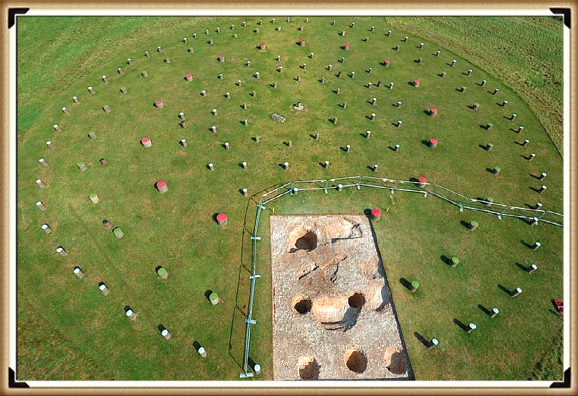
The following fact that goes unanswered is the reason for the large ramps by the post holes. You don’t take time to put 32 ramps into the soil unless it is essential, as you just added at least another month to the building work for the site and 500 working hours. What archaeologists have missed (or failed to mention) is in which direction these ramps were cut – as it tells us more than the entire excavation report by Cunnington.
The massive 4 – 5 ft pine posts of the 16 postholes (known as the C Ring) would weigh 214kg per foot of length. Therefore, several sizeable healthy adults could pick up a single story pole and place it in a hole without assistance or a need for a large ramp.
Moreover, the site plan does also give us another clue to the length of these poles. If to look carefully at the angle of the ramps into the giant postholes, you will notice that they are not all facing the same direction. The only logical reason for that to happen is if you erect the pine poles in a set order not to hit or interfere with each other when attempting to erect the posts. This would prove that the poles at Woodhenge were over 100 ft high (if not taller). (Archaeological pulp fiction)
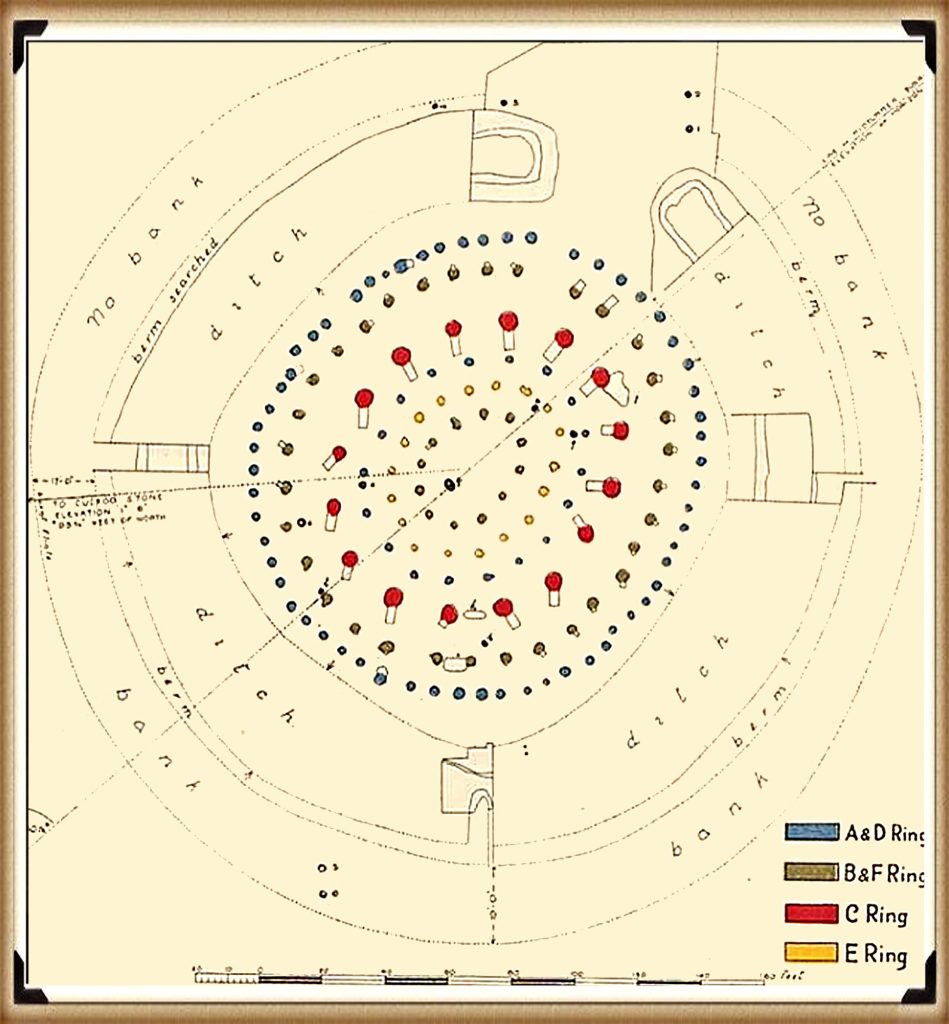
As for the dating of Woodhenge reconstruction (and Durrington Walls), like Stonehenge, unrelated antler and bone fragments have dated it to about 2400 BCE, which is very convenient. The problem is that most of the post hole samples at Woodhenge were either lost or have been stored away and not tested since the excavations between 1926 to 29, for reasons known best to the experts.
Moreover, like the samples taken from the old car park in 1966, pine charcoal was reported to be found “similar to the charcoal found at Woodhenge” was the quote from the labs at the time, who failed to carbon date the samples as the experts had declared them Neolithic, supporting the antler pick dates. Although now, once this gross error was exposed, we know these pine charcoal wood dates to be in fact Mesolithic 8100 BCE – which ‘begs-the-question’ so are the pine charcoal dates found at Woodhenge also Mesolithic, and why were they not also carbon-dated when the mistake was discovered? – more ‘bad science’ supporting the traditional model.
More information can be found about Woodhenge can be found on this website and on this video channel. (Archaeological pulp fiction)
If you study archaeology at university or even on an ordinance survey map at length, you will notice strange earthworks on the sides of hills of Britain, with no rational explanation as to why they are where they are. At university, these features are mostly ignored, or an excuse is made for their construction. The reality is that these features do not make any sense unless there is another factor in operation.
The first thing to notice is that the word ‘Dyke’ is associated with water. It does seem strange you would call an earthwork on top of a hill a Dyke, unless there was some history passed down through the years to its actual use. If we look at the most famous Dyke in Britain: Offa’s Dyke (that tracks the border between England and Wales).
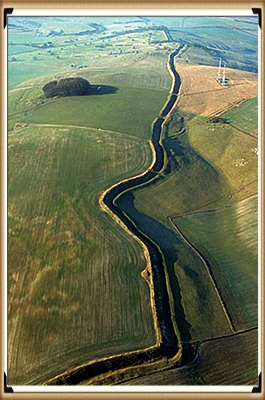
“Offa’s Dyke (Welsh: Clawdd Offa) is a massive linear earthwork, roughly followed by some of the current borders between England and Wales. In places, it is up to 65 feet (19.8 m) wide (including its flanking ditch) and 8 feet (2.4 m) high. In the 8th century, it formed some delineation between the Anglia kingdom of Mercia and the Welsh kingdom of Powys.”
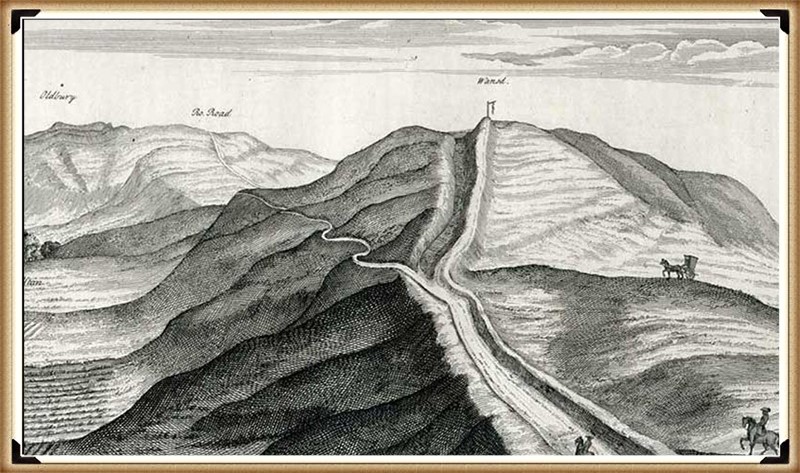
At face value, this seems to answer all the questions about dykes – except the water connection.
The current ‘traditional model’ for these features is split into two very unconvincing and easily disproven theories:
Defensive Feature – According to English Heritage, “Sometime during the 780s, Offa decided on the construction of a great earth wall and ditch, or dyke, running from ‘sea to sea’. The work required thousands of men, and each section seems to have been built by people from a different district. The fact that this mammoth undertaking was achieved illustrates the cohesion of the kingdom at this time. The dyke was never garrisoned but would have been manned by relatively small local forces. Offa died in 796 in a battle against the Welsh. It is believed that he was trying to establish a final link in the dyke to the Irish Sea in the north.“
The ditch only appears in the north of Wales (with two parallel ditches – not explained by any ‘experts’) and in the South. There is a massive 30-mile gap in the middle which is denoted by the River Wye. Consequently. If it was defensive, it had an enormous 30-mile flaw?
Boundary Marker – experts knowing the original ‘defensive identification’ have now fallen back to support a ‘boundary marker’ theory of the same date – but why build a massive ditch just a few metres from the rest of the river Wye – especially, when you are using over 30% of the same river as the accepted boarder marker?? – it’s completely flawed logic, again to support the irrational traditional model and dating system, especially, when there is a much more rational and simple explanation (a canal)?
More information can be found about Dykes (canals) can be found on this website and on this video channel.
Following on from the ‘Bad Science’ at Craig Rhos-Y-Felin, Mike Parker-Pearson then went ‘public’ and announced that they found the site of bluestones that supported his hypothesis on Stonehenge being built in 2800 BCE – but there was a problem even with this only two carbon ‘nut case’ date. It was still 500 years too early, and so MPP came up with a ‘credible theory’ about the date differences – A Welsh prototype stone circle that was moved 500 years later.
Consequently, the search started for this mysterious ‘lost’ stone circle in Wales from 2013 (onward) to justify the 500-year gap in his dates. MPP has on several occasions, and he claimed to find this ‘mysterious site’, later to discover that it was nonsense (as he could not find his 3300 BCE date), and then they moved on to find another site. Needless to say, this is again ‘Bad Science’ as you have prejudiced your methodology, as these other sites may have actually had a more significant impact on the knowledge of Prehistoric Britain and the Stonehenge builders if they were fully excavated and reported upon – rather than just ‘backfilled’ for a later or another excavator in the future, as you are more focused on proving yourself right.
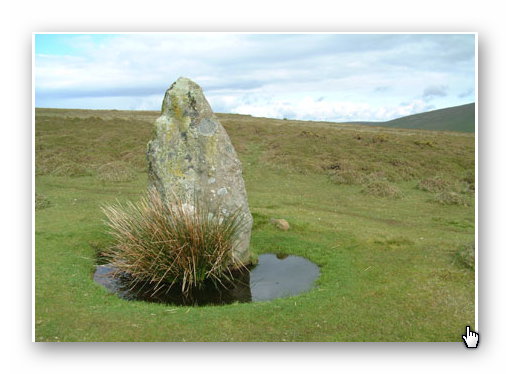
Therefore, the last hope of MPP’s reputation and his’ 10-year search’ fell upon Waun Mawn, culminating in the BBC documentary: “Stonehenge: The Lost Circle Revealed”, show on the 12th February 2021. Once again of the 43 carbon dates obtained from this new discovery, only three random samples supports his theory and none of the human-made hearths which are Mesolithic (like Craig Rhos-Y-Felin) or late Neolithic.
When they eventually found their target site Waun Mawn (after many claims that other sites were “the one we have been looking for” to eventually find that the carbon dating on these sites did not match the required date), they found just four bluestones, and so went on a stone hunt and found ten further stone HOLES! – This is clearly a sad attempt to fit a square peg into a round hole. The excavation was flawed as it only identified 14 possible stone locations and the remainder of the estimated 15 – 25 stones was a ‘guesstimation’ based on the known 14 holes – two of which had non-bluestone stones in situ.
Sadly, and not reported in the TV program, but within the Waun Mawn excavation report, there were not one OSL samples taken but 18, which gave results in the range of 6980+/- 2120 BCE to AD 1900 +/- 20. So, 17 dating sample did not verify MPP’s Hypothesis ONLY a single one which was dated 3530 +/- 330 (with that date range, the probability its 3300 BCE is slim!!). In fact, the OSL data in the review document suggested “removal of the stones” 2120 +/-520 BCE, long after Stonehenge phase I.
The program never went in to any detail of the OTHER carbon dates found at Waun Mawn, which would allow a balanced scientific program enabling the viewer to decide whether MPP’s hypothesis was feasible? It dictated speculation as fact justified by a number of site workers and the presenter agreeing on MPP’s ideas, without question or qualification – this is commonly known as ‘propaganda’ and not scientific methodology. Moreover, the REAL evidence CAN be found in the report and shows that the carbon dating evidence at Waun Mawn (the OSL data was excluded from the report except a small paragraph without all data!) shows that of the 43 samples taken:
1 – sample were of 9th Millennium BCE
3 – samples were of the 8th Millennium BCE
8 – samples were of the 7th Millennium BCE
4 – samples were of the 6th Millennium BCE
10 – samples were of the 5th Millennium BCE
6 – samples were of the 4th Millennium BCE
11- samples after 4th Millennium BCE up to 17 AD.
It seems that the BBC has produced a nice piece of archaeological propaganda that supports the current false ‘archaeological narrative’ of mythology and speculation, rather than tested and qualified scientific fact. This lack of ‘critical analysis’ is a clear indication of why the ‘science’ of archaeology has not progressed much over the last 50 years, even with modern technology, which it has incorporated to minimal success.
More information can be found about Waun Mawn can be found on this website and on this video channel.
In conclusion
We have sadly seen this kind of censorship and banal attitude to knowledge and education before in pre-enlightenment Europe, with the dominance of the Christian church as a fundamental feature of the establishment
It is also a reminder of a world, just 350 years ago, that used ‘suppression’ to control the thoughts of the mass population against any kind of ‘original thought’ or ideas. Galileo Galilei; (15 February 1564 – 8 January 1642), was an Italian physicist, mathematician, astronomer, and philosopher who played a major role in the Scientific Revolution. His achievements include improvements to the telescope and consequent astronomical observations and support for Copernicanism. Galileo has been called the “father of modern observational astronomy”, the “father of modern physics”, the “father of science”, and “the Father of Modern Science”.

Three hundred and fifty years ago, he was not a father to anything, and he was a ‘heretic’ as he believed that the earth went around the sun, contrary to the bible (a peer-reviewed book). Galileo did not have the internet to promote his hypothesis, and the church had a complete monopoly over ideas and the print industry at that time. Moreover, even after verification of his evidence and the acceptance of his theories, it still took another fifty years for the ‘Inquisition’s ban’ on printing Galileo’s works to be lifted in 1718 – when permission was finally granted to publish an edition of his works (it had to exclude the ‘condemned’ Dialogue’s) – the church finally lifted this partial ban in 1835, just 178 years ago and 193 years after his premature death.
This kind of institutional censorship still survives today but in a different form. The print industry in the last century, through books, used to (and in some instances still do) publish ideas through ‘accredited’ authors only (Professors and some PhD’s, within the subject matter). But this is not the censorship of ideology, and it is censorship through publishing editorial ignorance!
I was at a journalist workshop the other day at the Guardian Newspaper (one would imagine a safe liberal-minded audience); the science writer confessed that most of the new books and articles under review were written in such convoluted scientific language that most people, including the editors of scientific journals, had no idea if the content was true of false, so they had to rely on ‘peer review’ for its accuracy. The problem with this system is that is fraught with significant concerns, as your peer may be either your competitor or rival. The long-term effect of this ignorance is the stagnation and dismissal of new ideas (even if there is overwhelming evidence), just like we have seen with Galileo’s life. Not because he was wrong, but because if he is right – his (so-called) peers would be shown to be wrong and their credibility questioned.

The church was brought down by science in what is termed the ‘enlightenment period’ where truth overcome ignorance. Sadly, what we have seen since is the replacement of the church with academia, who use the same propaganda and discrediting tactics to maintain their cultural dominance.
Science was revolutionary as it questioned authority and demanded qualified answers (speak truth to power) – but that methodology and philosophy is missing from academia today. Universities do not teach knowledge to their students they instead teach conformity and censorship using exclusion as a weapon of choice. For if you dare questioning the so-called facts at University, you will fail to obtain the grades as punishment and consequently, the chances of any financially successful career in the future, forcing you to live a life of poverty and suppression.
Further Reading
For information about British Prehistory, visit www.prehistoric-britain.co.uk for the most extensive archaeology blogs and investigations collection, including modern LiDAR reports. This site also includes extracts and articles from the Robert John Langdon Trilogy about Britain in the Prehistoric period, including titles such as The Stonehenge Enigma, Dawn of the Lost Civilisation and the ultimate proof of Post Glacial Flooding and the landscape we see today.
Robert John Langdon has also created a YouTube web channel with over 100 investigations and video documentaries to support his classic trilogy (Prehistoric Britain). He has also released a collection of strange coincidences that he calls ‘13 Things that Don’t Make Sense in History’ and his recent discovery of a lost Stone Avenue at Avebury in Wiltshire called ‘Silbury Avenue – the Lost Stone Avenue’.
Langdon has also produced a series of ‘shorts’, which are extracts from his main body of books:
For active discussions on the findings of the TRILOGY and recent LiDAR investigations that are published on our WEBSITE, you can join our and leave a message or join the debate on our Facebook Group.

